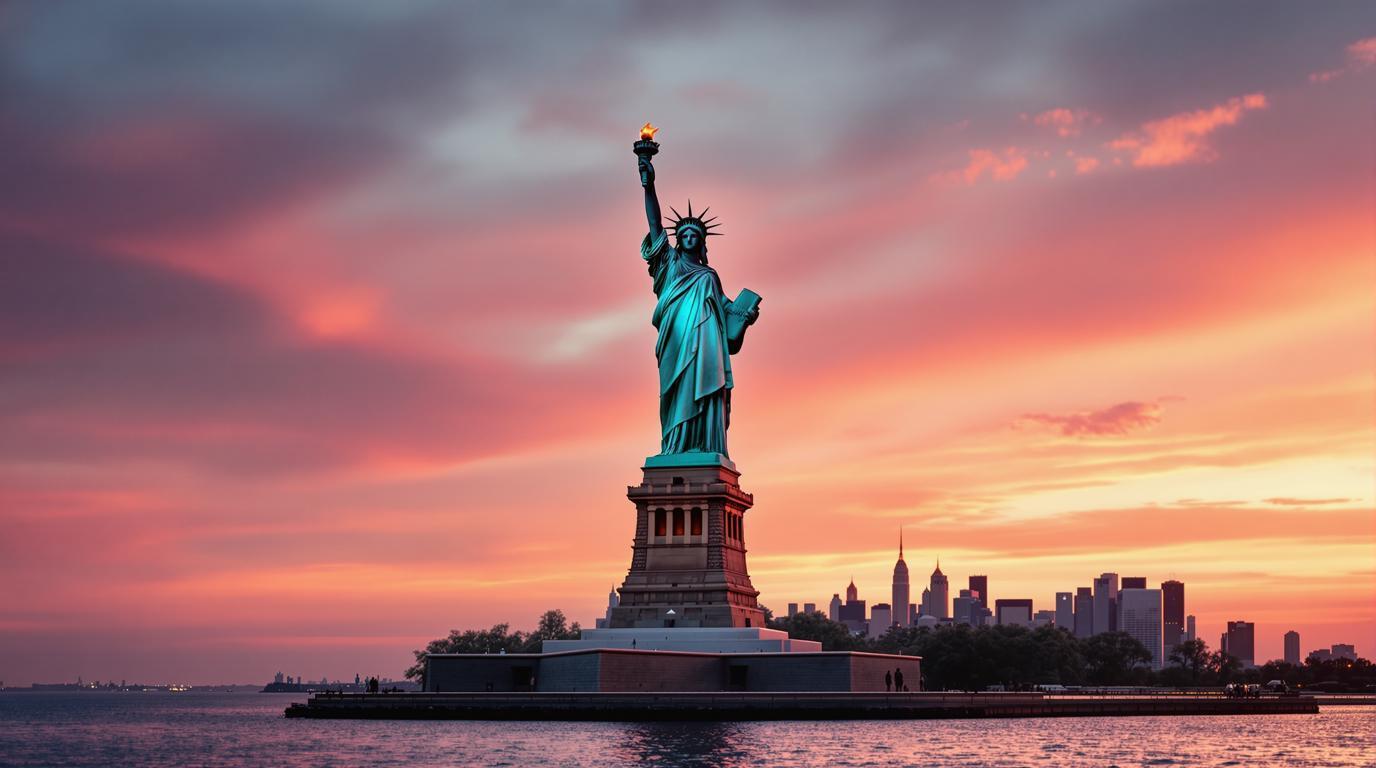The Statue of Liberty stands as more than just a monument – it’s America’s 305-foot promise of freedom that continues to captivate over 3.7 million visitors annually. This copper colossus has witnessed generations of hopeful immigrants arriving at New York’s shores since 1886, its torch-bearing silhouette becoming perhaps the most recognizable American symbol worldwide.
An unexpected French connection
Few visitors realize the statue was actually conceived by French historian Édouard René de Laboulaye in 1865 as a gift celebrating American democracy. French sculptor Frédéric Auguste Bartholdi designed the neoclassical masterpiece, while Alexandre Gustave Eiffel (of Eiffel Tower fame) engineered its remarkable internal framework.
“The statue isn’t green – it’s actually made of copper that has oxidized over time. When first unveiled, Lady Liberty shone like a new penny,” explains National Park Service historian Barbara Applebaum.
The crown experience most tourists miss
While millions visit Liberty Island annually, only a fraction secure the coveted Crown Reserve tickets ($25.80) that allow access to the statue’s crown. The 162-step spiral staircase climb rewards adventurous visitors with spectacular harbor views that most tourists never experience. These limited tickets often sell out months in advance.
For a less strenuous but equally meaningful experience, the Pedestal Reserve ticket offers access to the observation deck and the fascinating museum housed within the granite base, showcasing the original torch and exhibits on the statue’s construction.
Ellis Island: America’s immigration story
Your ferry ticket includes access to nearby Ellis Island, where over 12 million immigrants were processed between 1892 and 1954. The Ellis Island National Immigration Museum houses poignant artifacts and photographs that bring to life America’s greatest migration story.
“My grandmother came through Ellis Island in 1923. Standing in the Great Hall where she once stood was incredibly moving,” shares visitor Michael Rosenberg. “It’s like touching a piece of your own history.”
The American Family Immigration History Center allows visitors to search ship manifests and immigration records, often revealing surprising ancestral connections to this historic gateway. For history buffs, the optional Hard Hat Tour explores the abandoned hospital complex rarely seen by tourists.
Photography secrets the guidebooks don’t tell you
For the perfect Lady Liberty photograph, bypass the crowded Battery Park viewpoints and head to Brooklyn Bridge Park at sunset. The golden hour bathes the statue in warm light while the Manhattan skyline provides a dramatic backdrop.
The morning’s first ferry (8:30 AM from Battery Park) offers not only smaller crowds but also magical lighting conditions as the rising sun illuminates the statue from the east. Photography enthusiasts should bring a telephoto lens to capture intricate details of the crown and torch.
Beyond the statue: hidden harbor gems
While most visitors focus exclusively on Lady Liberty, savvy travelers extend their harbor experience. The often-overlooked Governors Island, just a short ferry ride away, offers car-free cycling paths, historic forts, and unparalleled statue views without the crowds.
For a truly memorable experience, consider a sunset harbor cruise that circles both Liberty and Ellis Islands. As twilight falls, the statue’s illuminated form against the darkening Manhattan skyline creates a soul-stirring tableau that perfectly captures America’s enduring promise.
“I’ve traveled worldwide photographing monuments, but nothing quite matches that moment when you’re on the water, watching the Statue of Liberty catch the last golden rays of sunset,” notes National Geographic photographer James Wilson. “It’s quintessentially American – bold, hopeful, and beautiful.”
